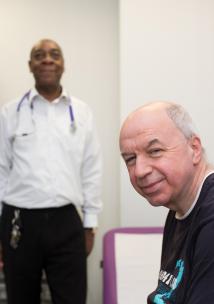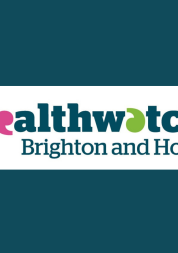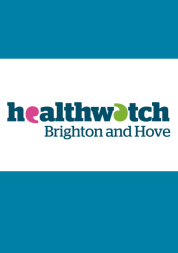Equality Impact Assessment 2020

The Equality Impact Assessment (EIA) presents the degree to which the reports we publish reached out to the ‘protected characteristics groups’ specified in the Equality Act 2010.
This EIA uses data from all project reviews published by Healthwatch Brighton and Hove between April 1st 2019 and March 31st 2020. The report includes equalities data on each individual project plus equalities data for all projects combined as a final section.
The individual reports and overall findings show Healthwatch Brighton and Hove is effective in hearing the views from a wide range of people and patients. We are effective at gathering views from people with disabilities; people with varying sexual orientation; people with different religious beliefs; people from Black, Asian and Minority Ethnic (BAME) groups and young people.
Areas that require more engagement are the following:
- Men – all projects show more women being engaged than men
- Younger age groups
- More detailed recording of disability.
Findings are representing views from:
- People with disabilities – 54% of people engaged are those with disabilities compared to 16% across the city.
- People from varying sexual orientation and trans are comparable to the diversity in the city.
- Religion – from the two reports that recorded people’s religious status (views of BAME young people around local sexual health services; outpatients’ booking service), Healthwatch Brighton and Hove has been effective in hearing the views from people who were Muslim, Buddhist, Hindu and Jewish.
- Ethnic diversity – Healthwatch reports are able to achieve representation from a proportion of Black, Asian and Minority Ethnic (BAME) groups comparable to the city as a whole (19% of the people engaged are not from a White British background). From the BAME sexual health study, 17 different ethnic minorities participated.
- Young people – in the BAME sexual health study, all 71 participants were aged 24 or younger.
Recommendations
It is recommended that future project activity understands more about the diversity of people engaged. This can be achieved by:
- Recording data on all the nine ‘protected characteristics’ from the Equality Act (2010). Or, having a clear rationale for why some characteristics are not recorded.
- Recording precise age rather than age group. This would enable more data analysis in terms of mean, mode and median age, as well as age range.
- Using the exact same wording for recording the equalities data in all surveys/faceto-face engagement.
- To support the above, creating a standardised equalities sheet than can be used in all engagement activity.
- Monitor the equalities’ data in projects throughout data collection. For example, if the number of young people participating is low, look at ways to enhance their inclusion prior to completing the data collection.
- Work collaboratively with other organisations who are supporting specific communities to increase their representation in reviews.
Downloads
You can download the report here. If you need it in a different format, please contact us at:
office@healthwatchbrightonandhove.co.uk
01273 234 041

